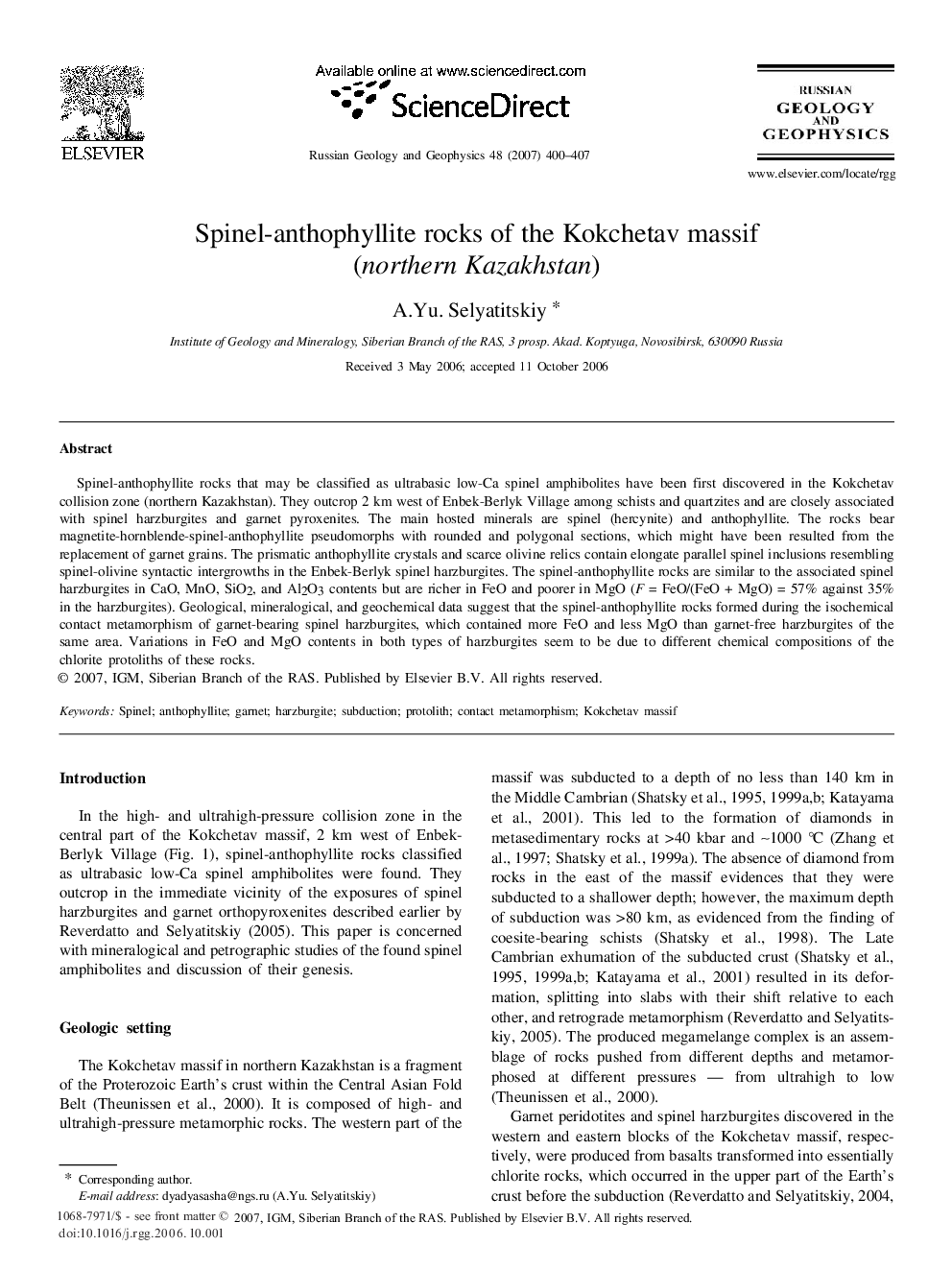| Article ID | Journal | Published Year | Pages | File Type |
|---|---|---|---|---|
| 4739659 | Russian Geology and Geophysics | 2007 | 8 Pages |
Spinel-anthophyllite rocks that may be classified as ultrabasic low-Ca spinel amphibolites have been first discovered in the Kokchetav collision zone (northern Kazakhstan). They outcrop 2 km west of Enbek-Berlyk Village among schists and quartzites and are closely associated with spinel harzburgites and garnet pyroxenites. The main hosted minerals are spinel (hercynite) and anthophyllite. The rocks bear magnetite-hornblende-spinel-anthophyllite pseudomorphs with rounded and polygonal sections, which might have been resulted from the replacement of garnet grains. The prismatic anthophyllite crystals and scarce olivine relics contain elongate parallel spinel inclusions resembling spinel-olivine syntactic intergrowths in the Enbek-Berlyk spinel harzburgites. The spinel-anthophyllite rocks are similar to the associated spinel harzburgites in CaO, MnO, SiO2, and Al2O3 contents but are richer in FeO and poorer in MgO (F = FeO/(FeO + MgO) = 57% against 35% in the harzburgites). Geological, mineralogical, and geochemical data suggest that the spinel-anthophyllite rocks formed during the isochemical contact metamorphism of garnet-bearing spinel harzburgites, which contained more FeO and less MgO than garnet-free harzburgites of the same area. Variations in FeO and MgO contents in both types of harzburgites seem to be due to different chemical compositions of the chlorite protoliths of these rocks.
